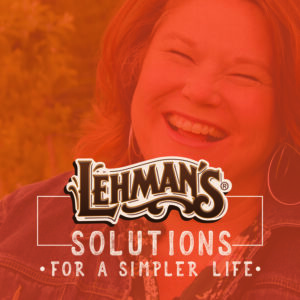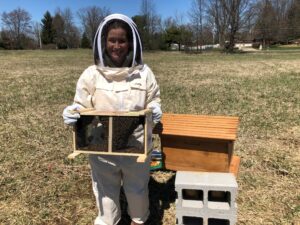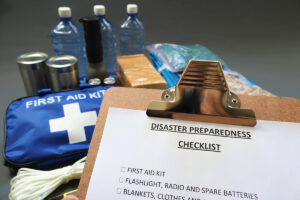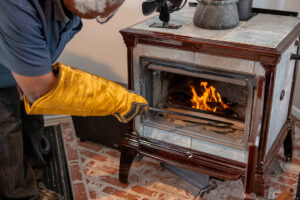Editor’s Note: We are pleased to share the thoughts and musings of our local Amish neighbors, as published in Plain Values Magazine. This series covers questions ranging from religion to education in the Amish community. Today, Daniel Miller shares his thoughts on education.
By Daniel Miller
Ask an Amishman in a straw hat about education, and he’ll likely glance at you from under a raised eyebrow. It’s not hard to figure out why. In opposition to the mainstream uber-education mindset, the Amish deliberately choose eight grades of basic schooling. Those eight grades represent the education under my own straw hat, so my understanding of America’s advanced academic hierarchy is sketchy. I’m familiar, though, with how the Plain Community schools operate. After all, I’m one of us.
The differing models of education have been a source of serious contention in the past. A momentous ruling by the Supreme Court in 1975, Yoder vs. Iowa, exempted the Amish from state compulsory attendance beyond eight grades, based on religious principles. A simple explanatory sentence such as that sidesteps the emotional trauma experienced by many Amish families where the father served jail time rather than comply with consolidation. Years ago, I read an excerpt from a professor that still rings in my head, a snippet having to do with the Amish school system: “They reject consolidated schools’ emphasis on science and technical competence because of its obsession with present findings that discredit the past and move the world in a progressive direction (F.H. Littell, 1969).” That’s pretty well it in a nutshell.
Since then, 1-room schoolhouses have sprung up in every corner of Amishdom. The classrooms operate in a structured environment. Teachers themselves are 8th grade graduates, often young teenage girls several years removed from school, who now serve as role models for their students. They teach only the basic subjects, like everyone knows, yet there’s an underlying but very real emphasis on community values and attitudes wrapped in cooperative activities, obedience, respect, diligence, kindness, and an appreciation for the natural world. Little attention is given to independent thinking and critical analysis. Creativity is encouraged, not as much for self-advancement but for the good of all, to use God-given talents to further His kingdom.
Schoolhouses are geographically situated, more or less. Their localness to the students’ homes makes it handy for the children to walk or ride bikes, scooters, and pony carts. That in itself embraces neighborhood connectedness. In my neighborhood, Hickory Hollow School is tucked in a side hollow, just around the corner from our farm, a quarter mile away. Schoolchildren go by, morning and late afternoon, waving gaily. That, folks, makes my day. Community-wise, what more could you ask for? Their friendliness and cheer empower me to turn my day around. My waving back gives them a sense of belonging. After all, these very schoolchildren will, in the not-so-distant future, step into leadership roles as responsible adults in our society.
So much for classroom education. There’s much to be said for apprenticeship, where graduates in their early to mid-teens work shoulder to shoulder with dads, older brothers, and local tradesmen who act as mentors. Encounters in tradecraft and the work arena builds on the springboard of those 8 grades of schooling. As we well know, the school of life is always in session. Take nature; its workings unravel its mysteries if we but listen and learn. Life outside the classroom is an ongoing education, no matter what age or station. Pursuing a higher level of knowledge is there for whoever is willing to go after it. Come to think of it, one of America’s most beloved figures—Abraham Lincoln—self-educated himself to national and world prominence. His formal schooling amounted to less than one year. In his inimitable fashion, he used to say he was educated “by littles,” a little here, a little there. Despite his backwoods beginnings, Lincoln’s homespun wit and wisdom is being quoted yet today.
Personally, I’ve never once felt deprived by lack of education. People in my neighborhood and the larger community are living highly fulfilling lives on eight grades of schooling. I see it first-hand. Having said that, the world we move in does require professionals. We rely on doctors and surgeons, lawyers, veterinarians, and other professions that demand hard-earned doctorates. While the Amish tap into uber-education in this way, our career choices are at the opposite end of the spectrum. At the same time, we recognize and applaud the expertise of these highly skilled and trained professionals.
So you see, although the Amish strongly promote education, we abbreviate and tailor it to fit within the framework of who we are and how we live. “…that we may lead a quiet and peaceable life in all godliness and honesty” (1 Timothy 2:2b).
*****
Daniel and Mae live on a 93-acre farm between Walnut Creek and Trail, Ohio. Five children, hay-making, and Black Angus cattle take up any spare time after work at Carlisle Printing.

































I totally agree…I am not Amish, but appreciate many of their ways. Our nation’s school system needs to go back to the basics to train our young people how to lead responsible and productive lives. We need to concentrate on reading, writing and math, history and geography and science and civics…period!
There is much to be said for the Amish way of living. This beautiful article helps me understand one aspect of it. Thank you for sharing.
Thank you for your comment, Alice!